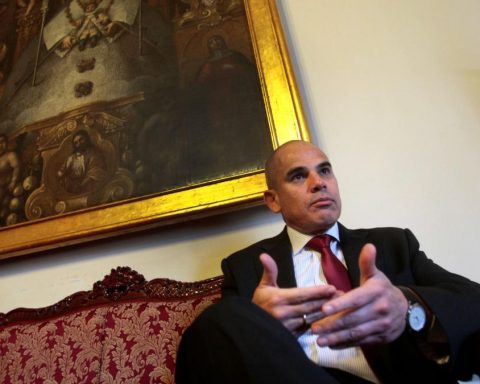This 2024 the decrease in the indicators of the dwelling. According to data from CamacolAs of October, sales barely grew 1%. The Non-VIS sector (Social Interest Housing) is the market with the greatest decline and the lowest rate of recovery compared to the other indicators. In the future, Experts are concerned about the available supply, which not only puts pressure on prices but also increases the housing deficit and hits the formal urban development of cities..
On the other hand, civil works projects rebounded this year with the progress of large railway works such as the Bogotá Metro and the Regiotram of the West. Likewise, the construction of mines boosted the Dane indicator by up to 16.5%. Track production increased 3% as of the third quarter of the year.
(You can read: ‘The proposed measures should help improve the purchasing power of workers’).
Roads in charge of Invías
Remittances exceed FDI
The figures of the Exchange Balance of the Colombian central bank realize that in the first 10 months of the year, Colombians in countries like United States, Spain, Chile, Mexico or the United Kingdomjust to mention the main ones, sent remittances for US$9,716 million, that is, 17.2% above those they had arrived in the same period of 2023, when the figure rose to US$8,289 million.
Last October marked five months in which remittances arriving in the country registered monthly income above US$1,000 million, so in November the record for all of 2023, when these reached US$1,000 million, will surely be surpassed. $10,091 million. That is, there are only US$375 million missing to reach last year’s global figure.
(We recommend: Pagadiarios: 1,100 households will receive monetary transfers in 2025).

Remittances
The financial crisis that depletes health
He definancing and the structural crisis in the Colombian health system They deepened during 2024, affecting the sector. Despite the proposals, resources and initiatives of various actors, problems persist, generating a domino effect that keeps thousands of patients at risk.
One of the most prominent topics of the year was the crisis of Health Promotion Entities (EPS). The intervention of Government to Sanitasone of the main EPSs in the country, unleashed uncertainty in the sector. This situation led Compensar and Sura to request their voluntary withdrawal from the system, decisions that were rejected due to the possibility of aggravating the crisis.
(We recommend: Minimum wage: unions ask for 12% and companies play for consensus).
At the same time, the debate on health system reform kept the issue at the center of the public agenda. The Government’s initial proposal was sunk in the Senate, prompting calls for greater consensus. As a result, a new article was presented, which managed to advance in the first Chamber debate..

EPS Sanitas
Restaurants: costs rise and sales fall
The gastronomic and restaurant sector did not have its best moment in the year that ends. High input costs and the slowdown in consumption that led to lower sales were the ingredients of the crisis.
“We had a year with ups and downs that show a lower per capita income and that showed that expenses outside the home have been reduced as demonstrated by the Dane“, said Brany Prado, director of Acodres Valle del Cauca and Amazonia, in charge of the union.
As things stand, the industry is experiencing drops of 40% in sales, experiencing a scenario similar to that of the pandemic, with the difference that this year the sector had no relief.
On the contrary, the sector experienced an increase in costs of more than 36% while the prices of its products increased by 11%, Prado said.
PORTFOLIO

















